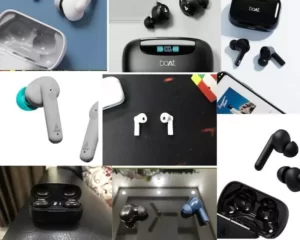Headphones come in many shapes and designs; some are foldable, some have tiltable ear cups, some offer wired connection, and most are wireless. Be it any design or structure headphones come in two different sizes and here’s our opinion about on ear vs over ear headphones; which is ideal for you.
In the last 3 years, we’ve tested more than 20 headphones and this article will be a complete summary with pointers that will help you choose the best one.
So with that said, welcome to PadhkeDekho, and let’s get started with the On-ear vs Over-ear headphones comparison. There are 5 things to look out for when picking up a new headphone.
On Ear VS Over Ear Headphones Differences
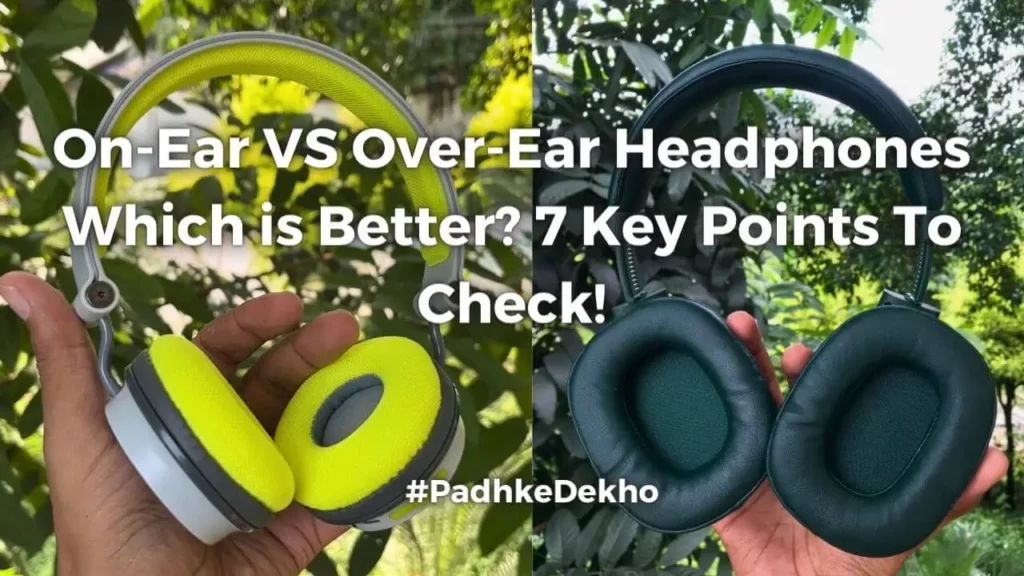
#1 Basic Difference
The major difference between on-ear headphones vs over-ear headphones is the size/weight and overall form factor.
On-Ear headphones or “on” “ear” headphones are built in a way that the ear cups rest on the ears without any contact with the skull. This brings a few pros and cons to the table.
Pros: The grip or clamping force is the best; as a result, you can easily wear these for your workouts or gym needs. Even for jogging and walking, these do not move a lot.
Cons: Since the grip or clamping force is high, the headphones feel a little tight on the head. Hence, you will not feel comfortable using it for long hours. And if you wear eyeglasses or spectacles then things get a little messy.
Whereas, the Over Ear headphones or “over” the “ear” headphones cover up the entire ears and rest on the skull. This means the headphones do not put pressure on the ears. In fact, you get a snug fit. This fitting brings a few pros and cons to the table as well!
Pros: The comfort on offer is ultimate. You can wear these for long hours without discomfort. Additionally, I’ve personally observed better passive noise cancellation or blocking of ambient noise around you.
Cons: Since the ear cups fit on the skull they lose grip quickly as a result during workouts you will need to readjust them quite often. Secondly, over-ear headphones are heavier than on-ear headphones and are not built for everybody.
#2 How to Select a Headphone?
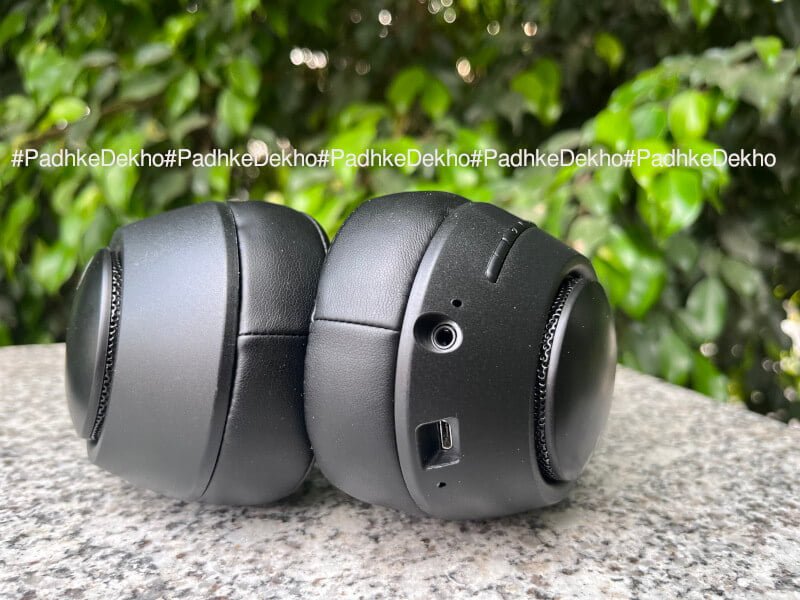
So how you will find the best headphone for yourself? Is it going to be On-ear or Over-ear? Let’s talk about that! Let’s say you are liking a headphone. But before ordering check out these 2 things.
1: Are The Earcups Tiltable?
If the headphone has tillable earcups then do consider it. Why? Because it will help you find a comfortable spot quite easily. Some offer complete tiltablity like the image below.
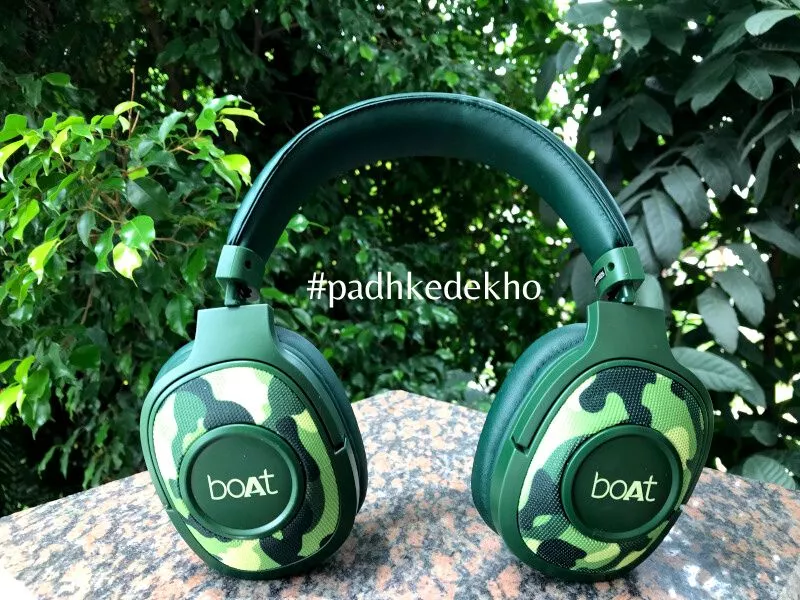
With that, you can try different angles and things will work out.
2: How The Brand is Advertising?
Without testing a headphone, you cannot say whether it’s for you or not. But sometimes brands take 1 step ahead and mention a product as workout-centric or for sports people or gym friendly, etc.
During 2020, brands were targeting Work From Home or Full Day Battery, etc. as their campaigns.
This gives an impression of what the brand is focusing on. So, if it’s gym-friendly it means the claiming force will be good for workouts. How good? For that, you have to check dedicated reviews.
3: Does it Offer Dual Mode?
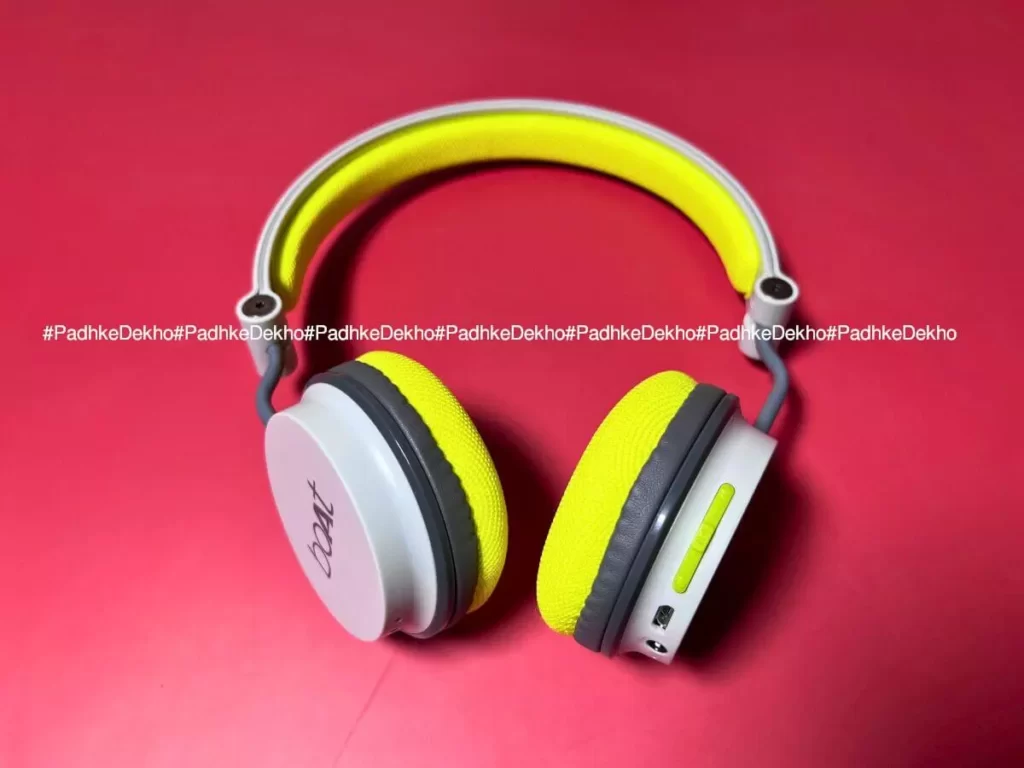
Most headphones come with a wireless mode (Bluetooth) as well as Aux-in (wired mode). Checking this out should be your priority. Why? Because this gives you the flexibility to pair up with your smartphone or laptop as you feel like.
For convenience, wireless mode is good but when you wish to preserve battery or have a better gaming experience you can plug in the Aux cable and use the headphones as long as you feel like it.
Having more options to pair is not a bad choice at all!
What Else to Check?
Now, these two questions are done; ask yourself for what purpose you are buying. What features you are looking for? What are your expectations? With that in mind, make your selection.
Let’s start with Portability.
#3 Portability
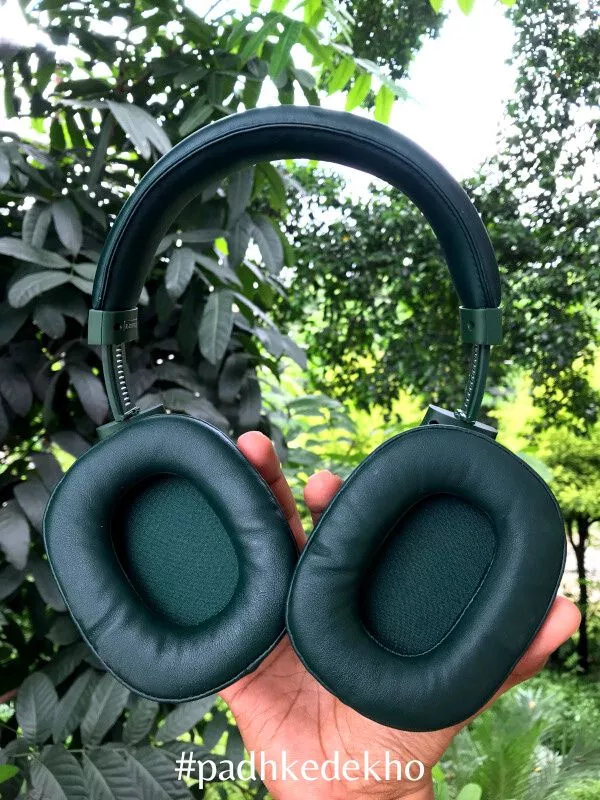
The over-ear headphones have bigger audio drivers, battery size, extra padding, and more hardware and features. This adds to the overall size and weight of the headphone.
Generally, over-ear headphones are over 200 Grams and you can feel this weight when consuming content on public transport looking down at your screen. While On-Ear headphones usually stay around 90 to 120 grams.
On-Ear headphones’ overall size is small which is achieved by a smaller battery, smaller audio drivers, less hardware features. As a result, they feel quite light and do not hamper your activities be it indoors or outdoors.
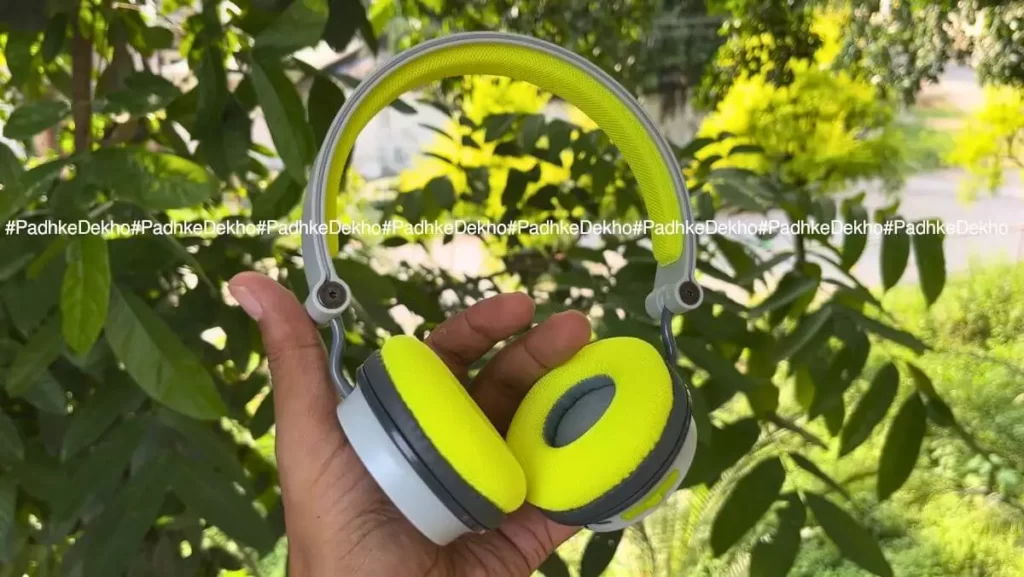
Hence, for portability, On-Ear headphones make more sense. Not only do they feel lightweight, do not hamper your movement, and do not look extraordinary! But also, they can fold and tilt the ear cups, so that you can wear them on your neck and have a little nap if you feel like it.
Whereas, most of the Over-ear headphones we’ve tested only have swivel ear cups and lack foldability.
Does this make Over-ear headphones bad? No! More about this, in #4 Comfort & Convenience.
#4 Comfort & Convenience
Comfort, in general, depends on where you are planning to use your audio gear. Are you buying it for PC or studio use? Or you are aiming to buy during your office commutes or while traveling? It’s either one. if you are lucky you might find an all-rounder.
Let’s say you go with option one; Studio/Office use. In that case, Over-ear makes sense as you can wear these as long as you wish. I’ve personally worn over-ear headphones for over 7 hours on a stretch.
But doing so with on-ear headphones is tough. Hence, for studio and better noise cancellation go with Over-ear headphones.
However for the second case which is traveling; You can pick as per your liking. But generally, Over-Ear headphones will cause some discomfort during outdoor use.
As we have said, they are heavy in the context of On-ear headphones and they do not fold ( most of the headphones) hence for travel get on-ear headphones.
But if you are looking for headphones with ANC then Over-ear headphones take the cake. As premium headphones are built keeping weight and comfort in mind.
But if you don’t care about Active Noise Cancellation, then you will be better off with on-ear headphones.
When buying the next headphone you should give convenience a thought. Are you planning to buy a wireless headphone or a wired one? How long will be the cable?
Why? Let’s say you bought studio monitoring headphones that usually pack in a very long wire (3 to 4 meters). So carrying it around will not be suitable. Generally, if your headphone has a 1.2 meters long cable it will be more than enough to allow you movement and comfortably reach your jeans pocket.
While wireless gives you all the space you need without being restricted by a wire.
#5 Clamping Force
In the #1 Basic Differences, we talked a little about clamping force and what effects it brings in day-to-day life. But now, let’s talk a bit more as it’s a serious feature.
Clamping force is referred to the grip of a headphone; how well the ear cups hug your ears, how firmly the headband grips your head, and the overall grip around your ears and head. if it is a snug fit with a little more force, it’s considered as good for workouts. Otherwise, it’s not ideal for workouts.
On-ear headphones are popular around the world because of their workout-friendly nature. if you are looking for gym headphones then on-ear is the way to go. Sports people wear these during photoshoots and in their personal life. Even we prefer these over Over-ear headphones during workouts.
But does this mean they are great for casual listeners like you? No! It’s not like that. The clamping force decides whether it’s suitable for movement-centric needs or media consumption needs.
As on-ear headphones are popular for their workout-centric needs, over-ear headphones are popular among audio producers and media consumers like any casual lister will be. Why is that? Because the clamping force is a bare minimum on the ears, while the skull helps to form a snug fit.
This helps an over-ear headphone to be very comfortable for long hours of use. Does, this mean these lose grip with a little movement? No! They stay where you feel like. Even you can use them for walks or even jogging sessions.
#6 Audio Quality
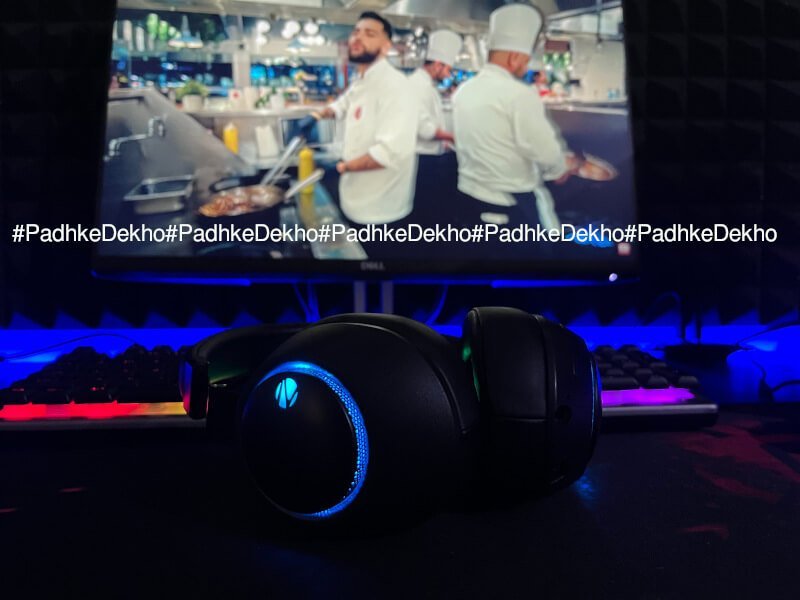
Is there any difference between on-ear vs over-ear headphones’ audio quality? Yes, there are differences and major differences.
On-ear headphones have smaller audio drivers. In addition to this with less space between the audio driver and the ears, most of the frequencies are not properly formed. With this, most on-ear headphones offer good bass, sharp vocals, and a pleasant listening experience.
Whereas, Over-ear headphones not only have bigger audio drivers they utilize the space around the ear and in-between the drivers hence all the frequencies are properly formed and audio distortion is quite less and sometimes non-existent.
What does this mean? It means the overall audio quality of an Over-ear headphone will be better than on-ear headphones. By “better” we are not targeting any particular aspect of the audio quality like bass, treble, or vocals.
But “audio” in a very general form, that most people can understand. In my personal experience, Over-ear headphones have always impressed me with clean vocals, good bass, and a pretty loud overall experience.
Hence, for a good overall audio experience, Over-Ear headphones are better.
#7 Battery Backup
Since Over-ear headphones have bigger batteries their battery claims are even bigger! But this does not make them better. Why? Because they pack in bigger drivers that consume more power. But still, they deliver better battery backup numbers.
But does it matter? Yes, it does and most of the time no. Let me explain.
Most headphones come with a 300 to 500 mAh battery and can be used between 5 hours to 20 hours. Even ANC-enabled headphones fall into this category. In a local survey we did in our neighborhood we found people do not use headphones for over 4 hours a day.
With that in mind, both headphones deliver much more than the actual most customers actually need in day-to-day use. Hence, you will be fine with any of the headphones; be it on-ear or over-ear.
On top of it, most headphones come with Aux-in support. So, when you wish to preserve the battery or if you have no battery at all, you can always switch to wired mode and keep on going!
But if you get battery anxiety then you should pick up Over-ear headphones as they power up for almost 3 times the on-ear headphones!
Wrapping up!

There you have it folks! This was PadhkeDekho’s on ear vs over ear headphone comparison. if you have any questions then feel free to comment below or reach us on the mentioned social accounts. We love to help our readers!
if this article helped in your decision-making, then please share the same with your friends and family who might be looking for this information.
Articles That Might Interest You!
- BoAt VS OnePlus Earbuds | Which is The Best Choice For You?
 Confused about which brand’s audio gear to buy? Here’s our BoAt VS OnePlus Earbuds comparison after testing their devices. Checkout now!
Confused about which brand’s audio gear to buy? Here’s our BoAt VS OnePlus Earbuds comparison after testing their devices. Checkout now! - Apple iPhone 13 in 2025 Makes Sense? 13 Points to Check out!
 Are you wondering whether you should Buy Apple iPhone 13 in 2025? You are at the right spot. I’ve been using it for over 2 years and this long term review will be of great help. Even after years of launch, Apple iPhone 13 stays in the news! This time it is gaining traction due… Read More »Apple iPhone 13 in 2025 Makes Sense? 13 Points to Check out!
Are you wondering whether you should Buy Apple iPhone 13 in 2025? You are at the right spot. I’ve been using it for over 2 years and this long term review will be of great help. Even after years of launch, Apple iPhone 13 stays in the news! This time it is gaining traction due… Read More »Apple iPhone 13 in 2025 Makes Sense? 13 Points to Check out! - Are BoAt Airdopes Durable? Opinion After Using 20+ Airdopes!
 Let’s say you are looking for a good tws earphone and found great deals on BoAt Airdopes. You must be wondering; are BoAt Airdopes durable? How long can I use it? or maybe you should try other brands? We are more than qualified to answer this question as we’ve owned and compared 20+ BoAt Airdopes.… Read More »Are BoAt Airdopes Durable? Opinion After Using 20+ Airdopes!
Let’s say you are looking for a good tws earphone and found great deals on BoAt Airdopes. You must be wondering; are BoAt Airdopes durable? How long can I use it? or maybe you should try other brands? We are more than qualified to answer this question as we’ve owned and compared 20+ BoAt Airdopes.… Read More »Are BoAt Airdopes Durable? Opinion After Using 20+ Airdopes! - Laptop Buying Guide Under 30000 Rs! The Best Out of The Rest!
 We recently visited a renowned electronics store and were blown away by how the sales reps were making fools of customers by recommending them laptops that will not work for even 2 years! 30000 RS is not a bad budget, you can get a decent laptop granted you are not going to play games or… Read More »Laptop Buying Guide Under 30000 Rs! The Best Out of The Rest!
We recently visited a renowned electronics store and were blown away by how the sales reps were making fools of customers by recommending them laptops that will not work for even 2 years! 30000 RS is not a bad budget, you can get a decent laptop granted you are not going to play games or… Read More »Laptop Buying Guide Under 30000 Rs! The Best Out of The Rest! - On ear vs Over ear Headphones Comparison! 7 Key Tips to Check!
 Headphones come in many shapes and designs; some are foldable, some have tiltable ear cups, some offer wired connection, and most are wireless. Be it any design or structure headphones come in two different sizes and here’s our opinion about on ear vs over ear headphones; which is ideal for you. In the last 3… Read More »On ear vs Over ear Headphones Comparison! 7 Key Tips to Check!
Headphones come in many shapes and designs; some are foldable, some have tiltable ear cups, some offer wired connection, and most are wireless. Be it any design or structure headphones come in two different sizes and here’s our opinion about on ear vs over ear headphones; which is ideal for you. In the last 3… Read More »On ear vs Over ear Headphones Comparison! 7 Key Tips to Check! - Infinity Service Experience in India! Pleasantly Shocking Incident!
 We were scheduled to publish the Infinity Tranz 710 review. Unfortunately, after 1 month of testing, the headphones gave up and were not accepting any form of charging. Be it via laptop, PC, or wall charger. This has happened to us for the first time using products from Infinity in the last 4 years. So… Read More »Infinity Service Experience in India! Pleasantly Shocking Incident!
We were scheduled to publish the Infinity Tranz 710 review. Unfortunately, after 1 month of testing, the headphones gave up and were not accepting any form of charging. Be it via laptop, PC, or wall charger. This has happened to us for the first time using products from Infinity in the last 4 years. So… Read More »Infinity Service Experience in India! Pleasantly Shocking Incident!
FAQ
On-ear vs Over-ear headphone Which is Better?
Both headphone types are very different from each other and solve different purposes. Here’s our detailed article after testing 20+ headphones. Tap now to learn more.
On-ear vs Over ear headphones For Gym?
For Gym, you should consider on-ear headphones. They offer good clamping force. But do watch out for the IP Rating for water resistance.
On-ear vs over ear headphone for glasses?
if you wear eyeglasses then Over-ear headphones will be better. On-ear headphones put some pressure on the ears as well as the glasses. Here are 7 more points that you should check out before buying your next headphone.
On-ear vs Over ear headphones For Audio Quality?
For better audio quality, Over-ear headphones take the bigger pie of the cake. But you should check out other factors as well. Here’s our detailed comparison of on-ear headphones as well as over-ear headphones upon using 20+ headphones. Tap now!


